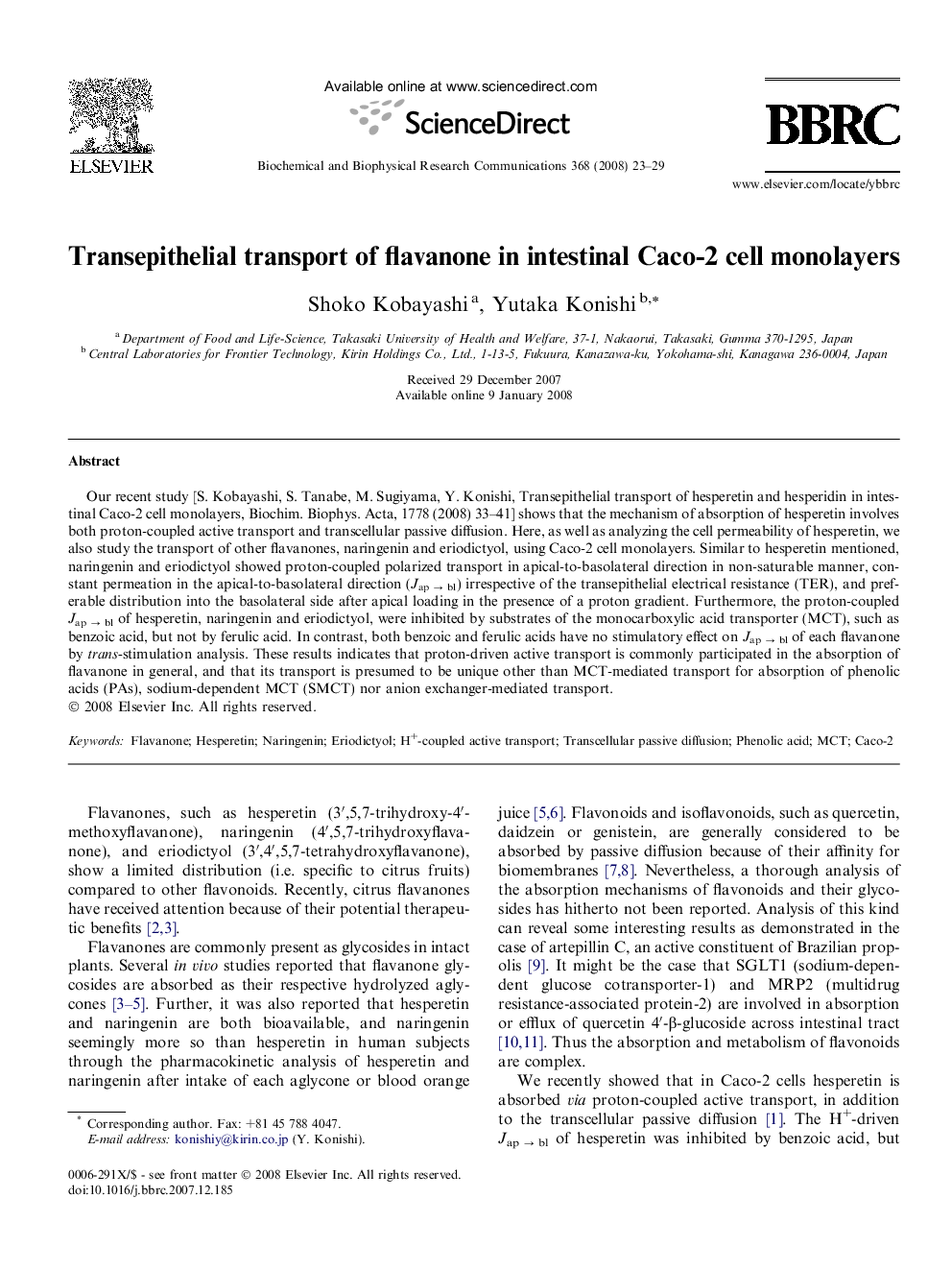| Article ID | Journal | Published Year | Pages | File Type |
|---|---|---|---|---|
| 10766870 | Biochemical and Biophysical Research Communications | 2008 | 7 Pages |
Abstract
Our recent study [S. Kobayashi, S. Tanabe, M. Sugiyama, Y. Konishi, Transepithelial transport of hesperetin and hesperidin in intestinal Caco-2 cell monolayers, Biochim. Biophys. Acta, 1778 (2008) 33-41] shows that the mechanism of absorption of hesperetin involves both proton-coupled active transport and transcellular passive diffusion. Here, as well as analyzing the cell permeability of hesperetin, we also study the transport of other flavanones, naringenin and eriodictyol, using Caco-2 cell monolayers. Similar to hesperetin mentioned, naringenin and eriodictyol showed proton-coupled polarized transport in apical-to-basolateral direction in non-saturable manner, constant permeation in the apical-to-basolateral direction (Jap â bl) irrespective of the transepithelial electrical resistance (TER), and preferable distribution into the basolateral side after apical loading in the presence of a proton gradient. Furthermore, the proton-coupled Jap â bl of hesperetin, naringenin and eriodictyol, were inhibited by substrates of the monocarboxylic acid transporter (MCT), such as benzoic acid, but not by ferulic acid. In contrast, both benzoic and ferulic acids have no stimulatory effect on Jap â bl of each flavanone by trans-stimulation analysis. These results indicates that proton-driven active transport is commonly participated in the absorption of flavanone in general, and that its transport is presumed to be unique other than MCT-mediated transport for absorption of phenolic acids (PAs), sodium-dependent MCT (SMCT) nor anion exchanger-mediated transport.
Related Topics
Life Sciences
Biochemistry, Genetics and Molecular Biology
Biochemistry
Authors
Shoko Kobayashi, Yutaka Konishi,
